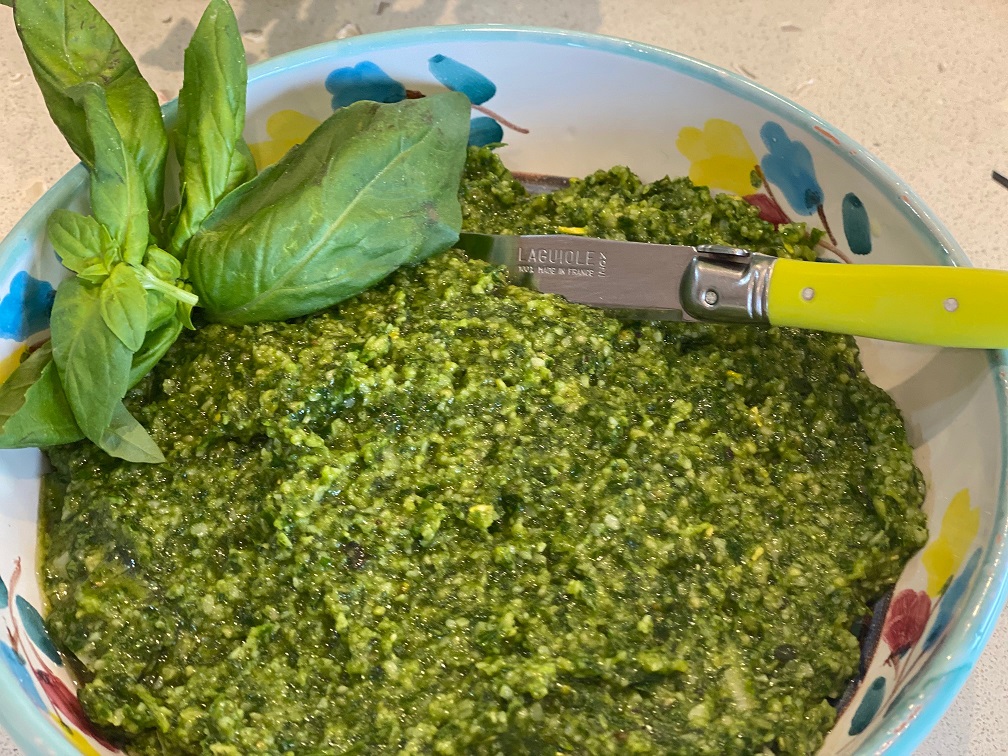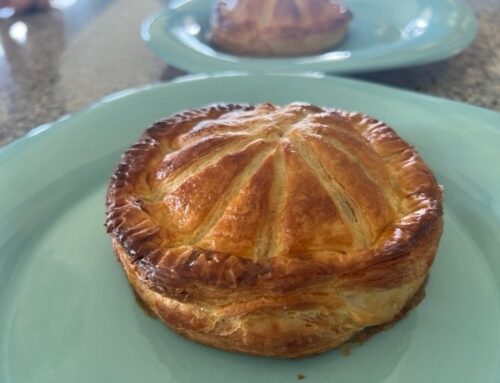Makes approx 300ml.
The classic Italian pesto is traditionally made with basil, pine nuts, garlic and Parmigiano Regianno. Pesto is a classic condiment in the modern Australian kitchen and is now made with endless combinations, such as parsley and basil, coriander, rocket, sorrel, Warragul greens, Australian native vegetables, capsicum and macadamias or pistachios. The version below is one of my favourites. It is delicious tossed in salads, through vegetables, such as ratatouille, and through zucchini noodles. Authentic Ligurian pesto from the Ligurian coastal area of N.W. Italy, is made with Ligurian basil, pine nuts, local olive oil and Parmigiano Regianno.
If you would like a stronger basil flavour, use 2 cups of basil leaves instead of the basil and parsley as used here. You can also substitute pine nuts for the macadamia nuts. Remember that the pine nuts are richer in flavour and in their natural oils than macadamia nuts which are denser and usually require more olive oil when making it
| Ingredients | Garnish |
| 1 cup basil firmly packed 1 cup parsley firmly packed 4 cloves garlic |
110g pinenuts 125 ml extra virgin olive oil 120g grated Parmigiano Regianno |
Place basil and parsley leaves, garlic and macadamias in the food processor and process until smooth. Add Parmigiano reggiano, and slowly add the olive oil, and then in a slow stream until incorporated into a smooth paste. Pour into a glass jar, cover with oil and refrigerate. This will keep for 2 -3 weeks.
Tip: when the pesto is made in the food processor the basil is cut into tiny pieces and so the air is more likely to cause discolouration of the basil’s green. When made in the mortar and pestle the basil is not cut but bruised it and so is much less likely to discolour.
To store it is important to cover the surface of the pesto to prevent any air exposure and hence discolouration of the beautiful green. When exposed to air the basil darkens and you loose the fresh, luscious, vibrant green colour. So you need to keep the surface protected with the olive oil.
To cover the pesto for just a day you can cover the surface with cling film, but it must sit on the surface of the pesto, pressed down well to exclude any air contamination.







